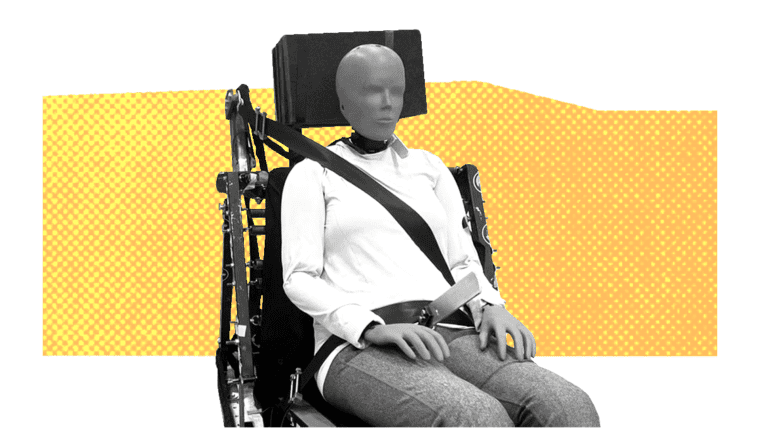Women are more likely to get injured in car crashes
The currently available test dummies don’t reflect the average female body
Women are 47% more likely to be severely injured in a car crash, but female test dummies could change this.
Compared to men, women are 17 percent* more likely to die in a car crash and 73 percent* more likely to sustain serious injuries in a front-end collision. Yet despite these discrepancies, car companies are only required to test vehicle safety using crash dummies modeled after the average man.
The numbers are telling
A 2019 study by the University of Virginia found that seatbelt-wearing women were 73% more likely to suffer serious injuries in a frontal car crash as opposed to seatbelt-wearing men. Data from the National Highway Traffic Safety Administration (NHTSA) in the US showed that a woman driver, or belted front passenger, is 17% more likely than a man to be killed in a car crash.
We know a lot of ways that men and women are different bio-mechanically. These differences have the potential to change the ways that seatbelts interact with the body and with our underlying skeletal structures, In addition to being, on average, smaller and lighter than men, women also have differences in muscle strength and in the shape of the torso, hips and pelvis. These differences all change how their bodies respond to crashes.
Despite evidence that women’s bodies react differently to car crashes than men’s, the standard dummy used in crash tests till date is one modeled on an average male body’s proportions.
Decades of male-focused testing has cost women their lives
While such statistics have been published time and again, there has been little to no progress on addressing these safety issues for women, despite women accounting for almost 50% of drivers in the US, for instance. In many other countries, figures are not that different.
In fact, US regulators had asked for a female dummy back in 1980, the report said. This was followed by an automakers’ petition in 1996, but it was only in 2003 that the NHTSA began using ‘female dummies’ — that too, a scaled-down version of a male dummy (to the size of a 12-year-old girl) that did not accurately represent physiological differences between male and female bodies and, moreover, represented only the smallest 5% of women at the time.

The first female crash dummy is here
Swedish researchers have created a crash dummy that better represents the female body. Their dummy is 5-foot-3 and weighs about 137 pounds, for the records. The team put emphasis on its chest shape and gave the female-modeled dummy a lower joint stiffness than its male counterpart. It’s equipped with sensors and transducers to measure the force exerted on each part of the body during a car crash.
Specifically, the team is testing it in low severity rear impact collisions. In this kind of crash, women have a higher risk of whiplash than men do, engineer Astrid Linder, director of traffic safety at the Swedish National Road and Transport Research Institute and leader of the research, said in a recent interview. Linder’s team monitors the dummy’s head and torso alignment, and they record factors such as the impact velocity, crushing force, braking rate and torque experienced by the body.
She explains findings and results of her team tests in the video below:
Tests were helded with different seats, and the team found that you could get quite different performances of the different seats depending on if it was the male or the female that were in these seats.
While car safety has advanced significantly over the past several decades, it “really hasn’t taken into account the differences between a male and a female. Sensors could be a great add on to measure injuries in both men and women and, thus, to lead to safer cars with safer airbags, with safer seatbelts, with safer occupant compartments that allow for different sizes.
Next step: new laws are required
Although a crash dummy modeled after women has been molded and tested, companies will not be required to use them unless new laws are put into place.
Last year, a team in the U.S. House of Representatives introduced legislation to “improve the federal government’s vehicle safety testing practices, specifically those involving the use of crash test dummies. A beginning, yet a long way to go.
*source: University of Virginia I Smithsonian Magazine I WEF I The Swaddle
cover image: BBC
Maker Faire Rome – The European Edition has been committed since its very first edition to make innovation accessible, usable and profitable for all. This blog is always updated and full of opportunities and inspiration for makers, makers, SMEs and all the curious ones who wish to enrich their knowledge and expand their business, in Italy, in Europe and beyond.
Subscribe our newsletter: we will select and share the most valuable information for you


















































































